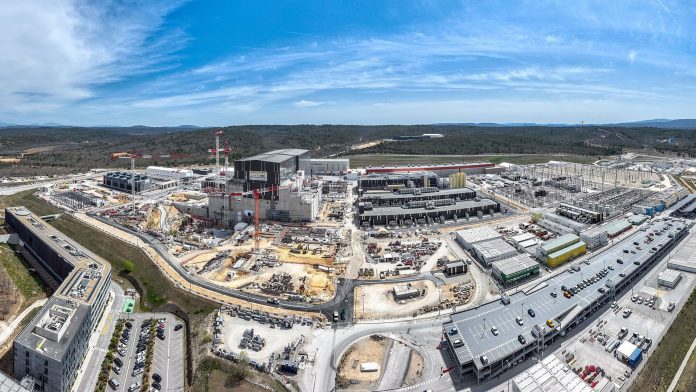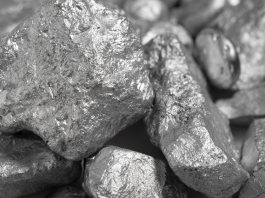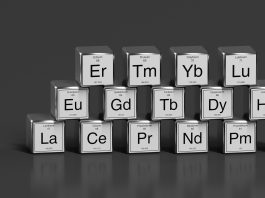Fusion for Energy (F4E) offers an inside look at ITER, the world’s largest tokamak, and what it means for the future of fusion energy.
Located in Southern France, ITER is one of the most ambitious energy projects and will be crucial to advancing fusion science and potentially commercialising it. Currently, it is the biggest international collaboration of scientists and engineers representing 50% of the world’s population and 80% of the world’s GDP, building the largest tokamak – a fusion device using superconducting magnets.
When operational, the main objective of ITER will be to achieve a deuterium-tritium plasma in which the fusion conditions are sustained mostly by internal fusion heating. Scientists are confident that the ITER plasmas will not only produce much more fusion energy but will remain stable for longer periods of time. ITER will also test the availability and integration of technologies essential for a fusion reactor (such as superconducting magnets, remote maintenance, and systems to exhaust power from the plasma) and the validity of tritium breeding module concepts that would lead in a future reactor to tritium self-sufficiency.
To find out more about the project, The Innovation Platform spoke to the team at Fusion for Energy (F4E) – the organisation responsible for Europe’s contribution to the project.
Can you start by telling us more about Fusion for Energy and its key aims and objectives?
F4E is the European Union’s (EU) organisation managing Europe’s contribution to ITER – the biggest international experiment bringing together seven parties (China, Europe, Japan, India, the Republic of Korea, the Russian Federation, and the US), aiming to test the potential of fusion energy using magnetic confinement.
Europe is responsible for nearly half of the project, while all other parties contribute equally to the rest. In addition, through a scientific collaboration between Europe and Japan, known as the Broader Approach Agreement, F4E supports fusion R&D projects that will generate valuable know-how to improve fusion technologies. For example, we are contributing to JT60-SA – the most powerful experimental fusion device to date, which is expected to operate later this year. In terms of long-term projects, F4E is involved in the design of demonstration fusion reactors (DEMO) that will be connected to the grid and pave the way to a commercial era.
Ultimately, all these initiatives have one goal – to bring the energy of the Sun to Earth. We are going through a fascinating learning curve, thanks to which we are acquiring new expertise, picking up new skills that will be essential for commercial fusion, and generate technology breakthroughs that can be transferred to other domains. ITER, which in Latin means ‘the way’, points to a new direction for energy which is clean and smart, with important geopolitical and financial benefits.
What progress has been made with ITER in 2022? What has been achieved? Were there any major obstacles you had to overcome?
In terms of the European contribution to ITER, we are pleased to report that, for the first phase of the experiment, we have successfully completed 75% of the infrastructure, buildings, and components required; while, for the second phase, we have exceeded 60%. Towards the end of 2022, significant progress has been made with the manufacturing of the five European vacuum vessel sectors, which will house the hot ITER plasma. In parallel, the production of power supplies has advanced with more deliveries on-site. The arrival of Europe’s first four cold valve boxes, as part of the fuel cycle, and the commissioning of helium and liquid nitrogen tanks, part of the cryoplant, were also of significance in the field of cryogenics.
The delivery of Europe’s ninth of the ten toroidal field coils, that will be used for the magnetic confinement of the burning plasma, has also been an important milestone. Civil engineering works advanced on-site with more progress in the ITER Control Building and Fast Discharge facility.
In terms of organisational changes, our colleague Pietro Barabaschi, was appointed Director General of the ITER Organization, responsible for the overall co-ordination of the contribution of all parties and assembly of the device, setting out a new strategy for the project based on improved collaboration.
Admittedly, the project encountered a few technical challenges. For example, two sectors of the vacuum vessel, which have already been delivered, and the cooling pipes of the thermal shield are undergoing checks and an action plan is rolled out to proceed with the necessary engineering improvements.
What are the main challenges facing the production and commercialisation of fusion energy in Europe? How can these issues be solved?
The current geopolitical context has highlighted more than ever the need for Europe to become more self-sufficient and to foster a sustainable energy mix. It is essential to ensure a steady supply while we are tackling climate change and try to curb greenhouse gas emissions. In Europe, more than half of the energy we consume is imported, amounting to €1bn per day. We firmly believe that there has to be another way forward to provide our citizens with sufficient, environmentally-friendly energy, without depending on others, and without deteriorating the wellbeing of the future generations. Exploring different alternatives which could complement one another is what we advocate.
In various policy forecasts, fusion is seen as a long-term option that will generate safe, clean energy. To achieve this, we need to master the technology to obtain net gains in generating power; improve the design of future reactors based on the lessons we will draw from ITER; encourage private and public initiatives to pursue fusion through different technologies; help industry to develop the necessary skills and standards in order to make a transition from the experimental stage to commercial scale. In general, we need more awareness and a new mindset to understand that fossil fuels and the political arrangements we had in place may no longer serve our objectives. The European Commission’s Green Deal and the green energy taxonomy offer financial incentives and a vision towards progressive decarbonisation.
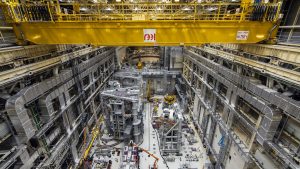
ITER Assembly Hall, with component pre-assembly in the foreground and the machine well in the background. On the right, vacuum vessel sector #8 from Korea is in the upending tool, ready for transfer across the hall to tooling, September 2022
How are you working with other organisations around the globe to accelerate fusion energy development?
F4E’s main task is to work together with Europe’s industry, small and medium-sized enterprises (SMEs), and research organisations to develop and deliver a wide range of components, as well as provide engineering, maintenance, and support services for the ITER project. Our funding comes directly from the EU budget and, through tenders managed by F4E, we ‘return’ this money to economic operators. As we are responsible for nearly half of the project, this means more opportunities to get involved. Since 2008, F4E has signed contracts for a value of €5.1bn with 565 companies, more than 1,700 subcontractors and 73 research organisations.
Apart from the financial support, which is a strong mechanism to ensure engagement from our suppliers, there are other means to keep up the momentum. The value of collaboration between international parties, small and big companies, research organisations and industry, merits special reference. In essence, we are building a community of suppliers that can interact, network, and work together to develop tomorrow’s fusion industry. This will be perhaps the biggest legacy of the ITER project and one that will have a long-lasting impact beyond the machine itself. Moreover, we are extremely keen to highlight the technology transfers to other areas that we have achieved via our involvement in ITER. We now have a dedicated portal that showcases success stories, which came from fusion and found a new purpose in other domains such as health, transport, robotics, electronics, etc. It is a ripple effect which helps European companies to access new markets, become more competitive, recruit people, and do business with other regions of the world. In other words, investment in fusion technologies can produce knowledge capital with potential gains in other fields.
Scientists at the US National Ignition Facility have recently made a key breakthrough by achieving ignition. What does this mean for your work?
It is terrific news for the National Ignition Facility team and the fusion community because, as mentioned before, we need to foster more awareness and engage in a more dynamic conversation with policymakers and citizens to understand the significance of this breakthrough, and its prospect. It is a message of hope and one that captures people’s attention, and imagination, as they are forced to cope with higher energy bills.
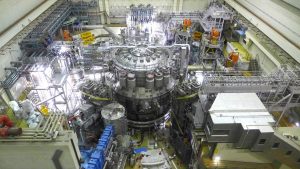
View of the JT-60SA device, Naka, Japan, 2022 © QST/F4E
Fusion energy is part of the news agenda, and there is an appetite to learn more about the way it works and what remains a challenge. Furthermore, we sense the pressure to deliver. As a result, one of the questions we frequently get asked is when this technology will be rolled out to produce electricity. It is the classic tension between a political deadline set for yesterday and a scientific response in progress for tomorrow. What this means concretely for our daily work is an execution of tasks conducted with rigour to comply with our technical specifications, strict compliance with health and safety standards, plus more transparency about the project’s progress. We need to make sure that our project plan is based on a realistic calendar for deliveries, with contingencies for repairs, further tests on-site or additional requirements by those in charge of licensing.
What will 2023 look like for F4E and ITER?
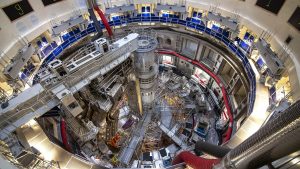
In the heart of the Tokamak Building, where assembly is ongoing in this 30m-deep pit, October 2022
This is the year of new beginnings in F4E, as we expect a formal decision regarding the appointment of our new Director. Undoubtedly, our new leader will need time to adjust, integrate, and develop a new vision for the organisation in line with our commitments. Also, in ITER Organization, apart from the appointment of the new Director-General, more organisational changes are planned to align the resources with the new mandate and priorities. Therefore, new people will find themselves at the helm of the project trying to offer a smooth transition and offer new impetus. One of the most anticipated outputs of the year is the revised baseline, which is planned towards the end of 2023, where the ITER Council will have to take a formal decision. In terms of our manufacturing activities, our aim is to deliver our first vacuum vessel sectors, our last Toroidal Field coil magnet, start the production of a series of in-vessel components, make further advancements in the field of heating and power supplies, and last but not least, continue with the civil engineering works. All these activities will be aligned with our commitment to build a healthy work environment in F4E, reflecting our core values of respect, collaboration, transparency, accountability, and teamwork. We would like this year to be an inspirational new chapter for the project, and our members of staff who are the driving force behind our achievements.
Aris Apollonatos
Senior Communications Officer
Fusion for Energy (F4E)
https://fusionforenergy.europa.eu/
Aris.Apollonatos@f4e.europa.eu
https://www.linkedin.com/company/fusion-for-energy/
https://www.facebook.com/fusionforenergy/
Please note, this article will also appear in the thirteenth edition of our quarterly publication.

